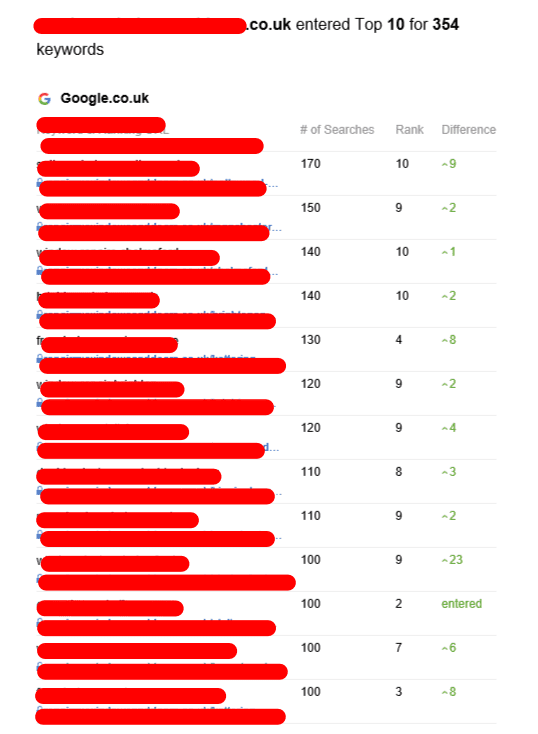Tiered Backlinks Boost Your SEO
Tiered backlinks can improve your SEO by directing high-quality link juice from Tier 1 links to your site. When done correctly, it looks natural to search engines and can boost your rankings without the risk of being penalized.
Tier 2 links are usually discovered on lesser-known websites, like article directories and niche-based blog platforms. They are also available in HARO submissions, or curated link roundsups.
First-Tier Links
Tiered link building is an effective method to boost the visibility of your website. It's also an effective strategy to increase your backlink profile. It is best used in conjunction with other techniques including guest blogging and niche editing. It could be risky, but only if used correctly. When creating links that are tier-linked, it's important to adhere to certain rules.
The first layer of your backlinks must come from domains that are relevant to the subject of your website. This will give your backlinks more credibility and will prevent you from getting penalized by Google. You can find these links in various ways, such as through directories and personal blogs. You can also find links from social media profiles or forums.
The links in the second tier you receive should be from websites with a higher PageRank. They must also be relevant to your particular niche. This kind of backlink can be constructed using various methods, including through a guest post on an authoritative website or through the HARO platform. You can also create them with a variety tools, like Xrumer or SEO Autopilot.
Third-tier hyperlinks should come from websites that have lower PageRank than your own. They must also have a high authority and be relevant to your niche. Backlinks can be created using any of the methods listed above, including forum posts, blog comments, and Wikis.
Second-Tier Links
Tiered link building is typically used as a way to increase the overall domain authority of a website. This is because if one site has a high domain authority, and it connects to another higher-authority site, the "link equity" will be passed on to the other site. second tier link building is called the link-domain authority (LDA) effect.
It can be difficult, however, to scale an elongated campaign without making mistakes. This is especially true when your backlinks are built by automated services or bots. If Google detects these types of footprints it could penalize your website and devalue all the work you've done.
This is why it's important to ensure that you're working with a reputable SEO agency when experimenting with tiered link building. These agencies will have the resources, team, and experience to help you achieve success with your tiered link building campaign.
It's important to avoid using second-tier links which aren't worth the cost. These kinds of links are often utilized by Fiverr freelancers to create thousands of cheap, shady backlinks. If Google sees this and decides to flag the entire profile of backlinks for penalties and you'll lose all your hard-earned rankings. These links could also lead to duplicate content, as well as other issues that could harm SEO efforts.
Third-tier Links
Tiered link building has been heralded by black hat SEOs as one of the top methods to create authority backlinks. It is a great way to increase the number of links to your website, but it is not without risk of penalties. Google could be a bit sceptical if you have thousands or hundreds of links linking to your website. Tiered link building can be utilized alongside other techniques like guest blogging or niche editing to create an organic look.
Tier-three backlinks are generally low-quality backlinks that have been made with the help of a bot, and they are often considered to be a source of spam. These kinds of backlinks are typically employed by SEOs to try to cheat the system however, Google's changes have made it more difficult to accomplish this successfully.
Using monitorbacklinks can be an effective way to track your tiered backlinks and disavow any you think are spammy prior to affecting your rankings. It can be a lengthy process, but the outcomes are well worth the effort. This method is also helpful when you're in a competitive field, as it can be difficult to gain traction when you don't have top-tier backlinks. Make sure you adhere to white hat guidelines, and avoid any strategies that are in violation of Google's Webmaster Guidelines.
Fourth-Tier Links
Tiered link development can appear as a tedious and time-consuming undertaking for those with no technical expertise. However, tiered links can help boost your website's visibility and credibility to search engines. However, you must be careful to avoid the use of black-hat methods to build links since Google has been slamming such strategies.
Tier three backlinks are the ones with the lowest quality backlinks in a tiered link-building strategy. They are usually low-quality links that connect to a destination page and can be created at a scale using automated tools. In this stage, volume is more important than quality and relevance. These backlinks comprise directories, profile links, and forum links. These backlinks are usually made by Fiverr services which provide 1,000 links for just $5.

Tier 3 backlinks may not be as vital as the first- and second-tier backlinks, but they are still an essential part of your tiered linking strategy. This is because they connect to the tier-two pages which are designed to improve the PageRank value of your website. These tier-two backlinks can be free or paid and can be dofollow or dofollow.
While tiered linking offers numerous benefits however, it comes with some risks. One of the dangers is that it can be difficult for you to keep track of the quality and quantity of your tier-2 backlinks which can lead to an Google penalty. Also, if Google notices your backlinks and devalues them you'll lose all the time and money that you spent on building them.
